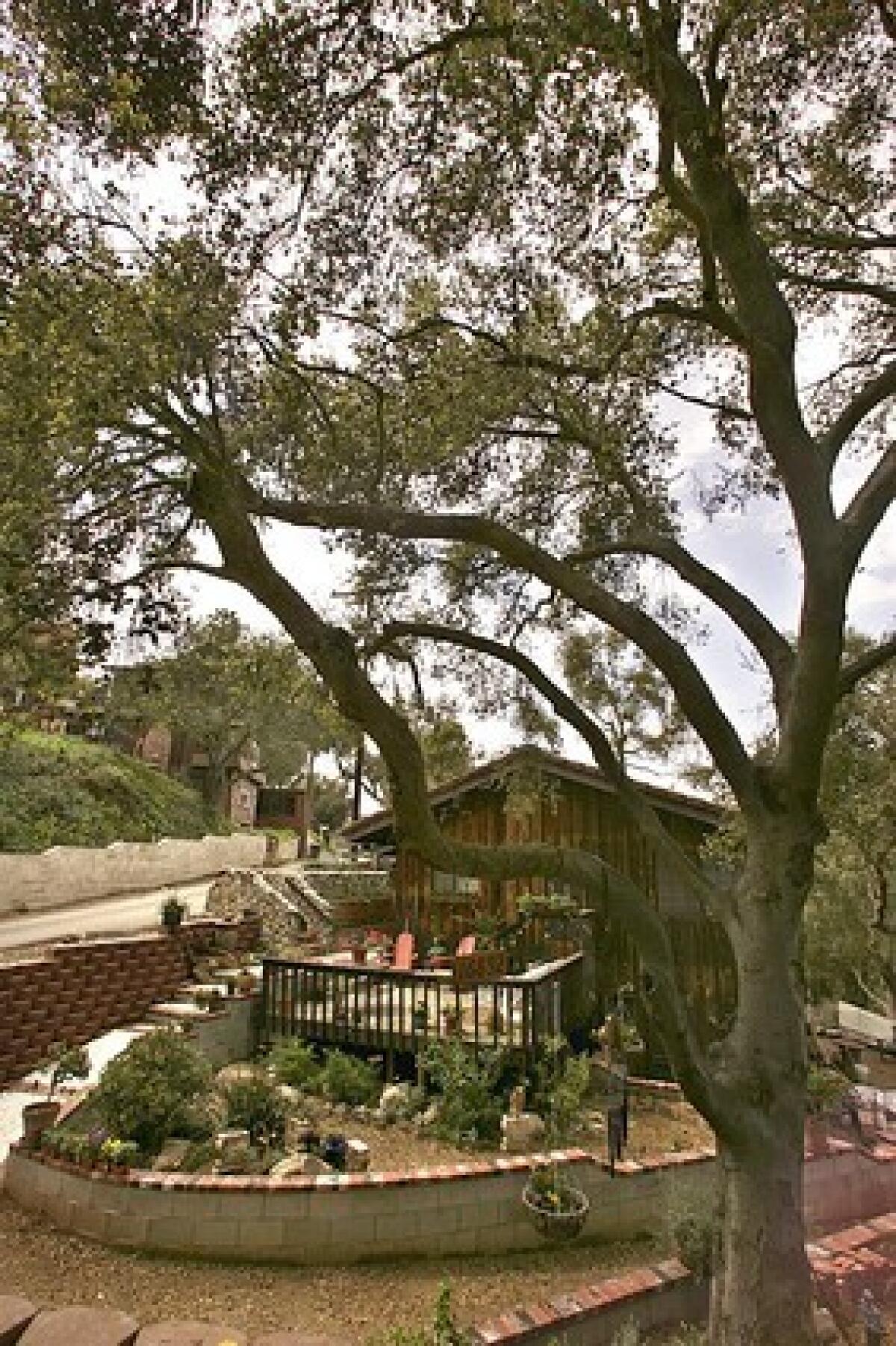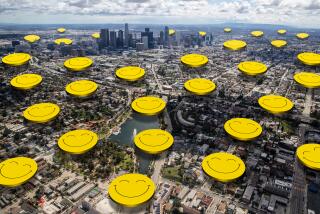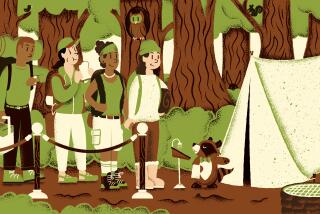Escaping to a hideaway in a hollow

Rocky hillsides and lush oak trees conceal the Chino Hills neighborhood of Sleepy Hollow from commuters on Carbon Canyon Road. This backwoods enclave is a haven for hermits who cherish their privacy. But one man’s hideaway is another’s definition of rural chic.
*
Beginnings
Sleepy Hollow is on the border between Orange and San Bernardino counties in the rugged terrain of Carbon Canyon. The area was a recreational destination for Los Angeles residents in the late 1800s and early 1900s, and small cabins made of discarded wooden planks dotted the rural landscape; most are still in existence but have been remodeled or rebuilt to meet today’s hillside safety requirements.
Throughout the 1920s, Sleepy Hollow’s mineral hot springs attracted vacationers while bootleggers found solace in its clandestine location during Prohibition. During the 1930s, this community was reported to have had three bordellos and a gambling house. The 1960s and ‘70s brought to Sleepy Hollow an influx of hippies and artists. Currently, Sleepy Hollow has 130 homes and no traffic lights.
*
Insiders’ view
Sleepy Hollow is an escape from life’s bustle. The overgrown thickets that hide old-fashioned homes, the serenity of hiking trails and the generational residents suggest that Sleepy Hollow is all about seclusion, nature and the longevity of tradition.Despite the development of nearby tract homes, Sleepy Hollow has maintained its country essence. According to Dee Nadeau, who has lived there since 1967, “Sleepy Hollow is not for everyone, but the people that live here tend to stay.”
Natalie Javid, who moved from a tract neighborhood to a Victorian-style home two years ago, said she enjoys Sleepy Hollow’s vast greenery.
“It’s about people who do not want to be forced into a cookie-cutter style of living,” she said.
*
Housing stock
Because most of Sleepy Hollow’s original homes were cabins, sizes range from 800 to 2,000 square feet. Larger properties are built on multiple lots. According to Meg Yacawych, from Century 21 Beachside, many homes have been remodeled or rebuilt.
Properties that have been built into the canyon’s hillsides have trails and creeks in their backyards, while thick brush and oak trees shield properties resting on flatland.
Homes run on septic systems. There are weathered shacks, farmhouses, antique Victorians and modern creations — all in varying condition.
On the market now for $399,000 is a 1,144-square-foot country-style home built in 1924. It has two bedrooms, two bathrooms and three decks.
On Rosemary Lane, a 1,506-square-foot wood-paneled home built in 1948 is listed at $449,000. It has two bedrooms, 1 1/2 bathrooms, a 1 1/2 -car garage and an outdoor rock waterfall.
*
What it’s about
Sleepy Hollow is a close-knit community made up of longtime residents. Spaghetti dinners, Halloween celebrations and Christmas parties are held at the community building on Rosemary Lane, which used to serve as a volunteer fire department station.According to Linda Wells and Diane Caliva, Tarbell real estate agents and canyon locals, Sleepy Hollow’s affordable prices have attracted first-time home buyers, including singles and newlyweds.
“Sleepy Hollow is a very clannish area,” Wells said. “People who live out here are ‘Canyonites.’ You either want this kind of lifestyle or you don’t.”
“There’s not a day that goes by where I don’t notice how beautiful everything is,” said Shannon Johnson, a resident of the community for 11 years.
*
Good news, bad news
Carbon Canyon Road runs through Sleepy Hollow and has become a busy thoroughfare connecting communities in San Bernardino and Orange counties. In addition to road noise, traffic around Sleepy Hollow at peak hours can be brutal.
With few garages and streets so steep and narrow that there’s only room for a single lane of traffic, parking is difficult. There have also been sightings of transients camping in the canyon’s depths, yet residents have not reported any problems. Due to its wooded location, Sleepy Hollow is also subject to wildfires.
*
Report card
Sleepy Hollow is served by the Chino Valley Unified School District. Children from kindergarten through sixth grade attend Gerald F. Litel Elementary, which scored 848 out of a possible 1,000 on the 2005 Academic Performance Index. Canyon Hills Junior High School and Ruben S. Ayala High School scored 842 and 770, respectively.
*
Sources: Meg Yacawych and Iris F. Tonti of Century 21 Beachside, Chino Hills; Linda Wells and Diane Caliva of Tarbell Realtors, Chino Hills; https://www.chinohills.org ; https://www.realtor.com ; California Department of Education, https://www.cde.ca.gov .
More to Read
Sign up for The Wild
We’ll help you find the best places to hike, bike and run, as well as the perfect silent spots for meditation and yoga.
You may occasionally receive promotional content from the Los Angeles Times.






